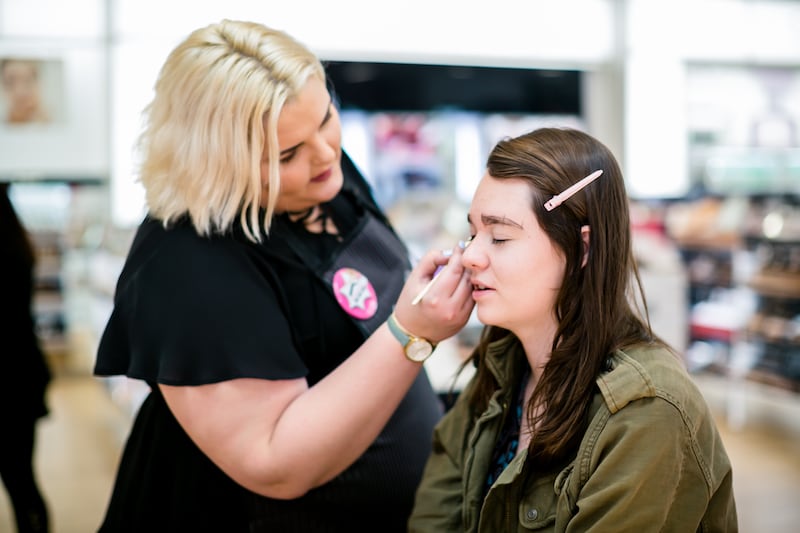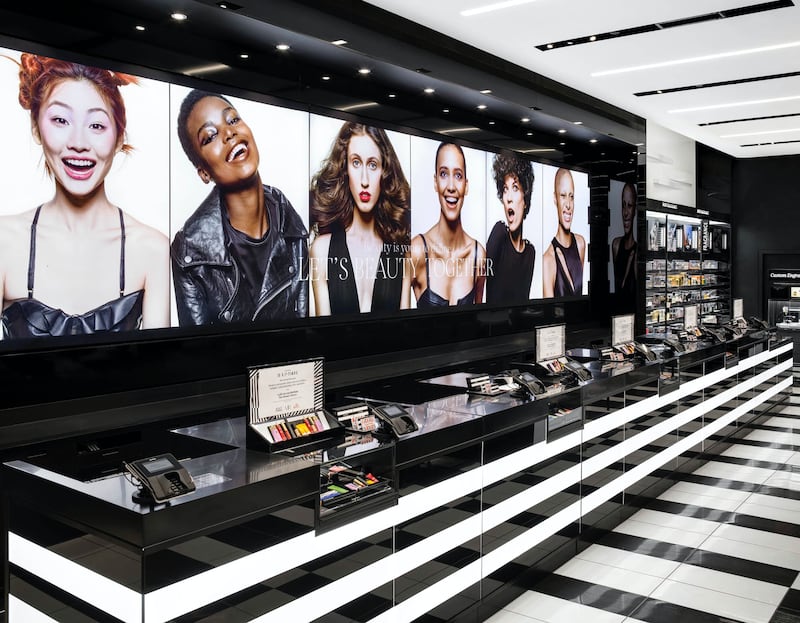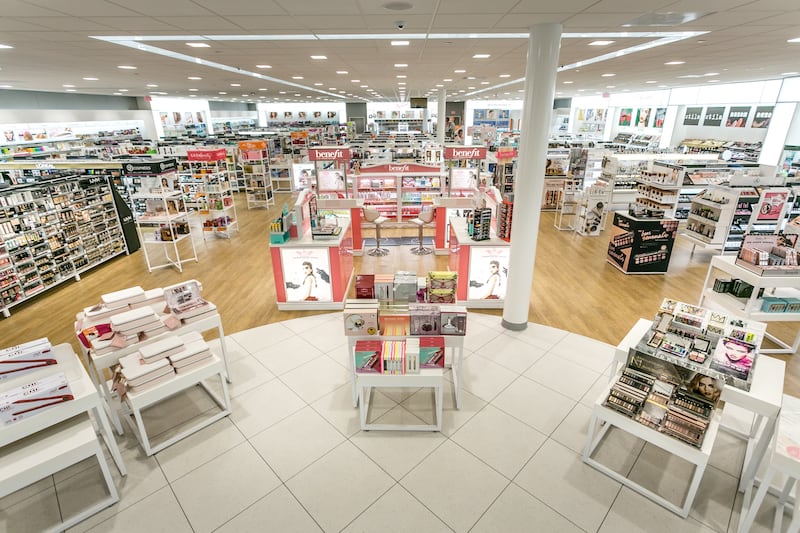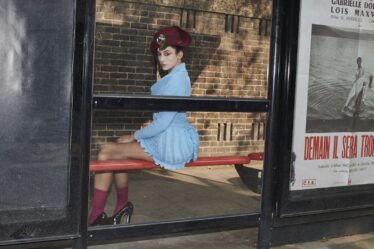
NEW YORK, United States — Sephora isn’t known for stocking budget beauty products, but change has been simmering at the LVMH-owned luxury beauty giant. In August 2017, Sephora announced that it would start selling ColourPop, a buzzy internet brand that has found success with millennials thanks to its $6 lip glosses and $16 eye shadow palettes.
ColourPop is also one of the top-performing brands at American mass-market rival Ulta. But the overlap is just one of the signs that Sephora and Ulta, the world’s two biggest beauty retailers, are increasingly going head-to-head in a sector whose battle lines are being redrawn.
Sephora is the world’s leading specialty beauty retailer. With 2,400 stores, it accounts for about 20 percent of total LVMH revenue and the vast majority of turnover in the group’s selective retailing division, which generated €13.3 billion ($16.3 billion) in sales in 2017. But Sephora and Ulta are neck-and-neck in the US — still the world’s largest consumer market. Sephora generated between $4.4 billion and $4.9 billion in 2016, according to Coresight Research, while Ulta, which has 1,075 stores but is yet to expand beyond its home market, generated $4.85 billion for the year ending January 2017.
Sephora and Ulta have taken different paths to success. Since its 1969 launch, Sephora has positioned itself as sleek and sophisticated, offering a curated selection of prestige brands, while replacing the traditional department store beauty counter with a more modern and democratic “try-more-buy-more” approach. Meanwhile, Ulta, founded in 1990, found success by offering a bright, budget-conscious alternative with a high-low product mix and an innovative format that combines one-stop retail with salon services, which now account for about half its annual revenue.
“It really is all things beauty, all in one place,” said Kecia Steelman, chief store operations officer at Ulta. “A lot of the time, the millennial shopper will come to us to purchase mass products, but they’ll transition over to the prestige side of the house. Or you have prestige shoppers who are also savvy spenders and have a couple of mass brands they buy. It’s important that we keep the right balance.”
Ulta, which sells about 20,000 different beauty products from over 500 brands, has recently focused on expanding its roster of cheaper, trendy brands in major categories, including makeup, skincare and hair care. Mass beauty brand Wet ‘n’ Wild entered two-thirds of Ulta’s stores last February, while social media favourite Dose of Colors expanded into 300 locations at the end of 2017. Early this year, fast-beauty company E.l.f. Cosmetics expanded into all of the retailer’s stores.
Benefit brow service in Ulta | Source: Ulta
But Ulta is also making headway in the prestige space, having scored a partnership with Chanel Beauté in March. (Until now, Chanel’s assortment at Ulta had been limited to fragrance. Sephora, which carries over 15,000 different products from 200 brands, also sells Chanel fragrance, but the brand discontinued the sale of its makeup products at the retailer’s stores about a decade ago.) The Chanel Beauté launch is significant because it boosts Ulta’s legitimacy among prestige brands, many of which are still cautious to engage with the retailer. Premium brands like Dior Makeup and Giorgio Armani Beauty distribute their fragrance lines with Ulta, but sell a wider selection of beauty products at Sephora.
“Despite the large number of value brands on the platform, Ulta has been very successful in attracting new prestige brands,” according to a report by L2, a business intelligence firm. “In the past year alone, 17 prestige brands selling on Sephora — including Nars, Shiseido and Origins — began distributing on Ulta. During the same period, only two prestige brands already distributing on Ulta — IT Cosmetics and Say Hello to Sexy Legs — began to sell on Sephora.”
And while Sephora’s product assortment remains predominantly prestige, Ulta’s product mix is now 55 percent prestige and 45 percent mass. But Sephora is also going after more new brands like ColourPop. “As more consumers turn to digitally native brands and they become a bigger part of their beauty regime, it makes sense for Sephora to include them as part of their strategy,” said Anagha Hanumante, an analyst at CB Insights. Sephora can “find future growth by providing more offerings and SKUs of highly sought-out indie brands,” agreed Kayla Villena, an analyst at Euromonitor.
Despite the large number of value brands on the platform, Ulta has been very successful in attracting new prestige brands.
What Sephora lacks in product mix, it makes up for with exclusives, however. In March, the company introduced an initiative called “First at Sephora,” teaming up with six of its best-selling brands — Pat McGrath, Benefit, Urban Decay, Tarte, Violet Voss and Natasha Denona — to launch each of their newest items exclusively. For the first 30 days after their respective launches, these products won’t sell anywhere else — not even on the brands’ own channels — and Sephora said it plans to recruit further brands for more exclusive collections throughout the year.
But negotiating with Sephora can be difficult for young brands, as the retailer often requires exclusivity. Many indie brands don’t have a choice if they want to get through Sephora’s doors — but some larger players are pursuing other options. L’Oréal, for example, is making a bigger push towards direct retail and has been rolling out freestanding stores for its popular Urban Decay brand.
Another concern for some beauty companies is that Sephora, owned by LVMH, is thought to favour the conglomerate’s labels like Marc Jacobs Beauty and Kat Von D, though Sephora maintains it does not treat LVMH brands preferentially. And while Sephora can be a heavy-handed partner, experts say the retailer is undeniably successful, with a powerful brand of its own. “Ulta is more reliant than Sephora on the third-party brands that it stocks,” said Deborah Weinswig, founder and chief executive of Coresight Research. “Sephora is much stronger than Ulta in consumer perception of its own brand.”

Source: Sephora
And yet, Sephora stocks a few blockbuster brands that are critical to its ability to generate buzz. Take Rihanna‘s Fenty Beauty line, birthed by Rihanna and LVMH’s product-development arm Kendo, originally part of Sephora until it was spun off in 2014. Following Fenty’s launch at Sephora — its exclusive US distributor — the number of consumers who said they were considering shopping at Sephora for their next beauty purchase rose from 15 percent to 24 percent, according to YouGov BrandIndex, which tracks consumer perception of thousands of brands worldwide. Indeed, some observers have wondered whether Sephora has become too dependent on Fenty. The line ignited such frenzy among beauty consumers that it helped boost LVMH’s third-quarter sales of cosmetics and perfume by 17 percent.
Loyalty programmes are another key battleground for Ulta and Sephora. “Loyalty programmes are the future because you can really track and know the customer, understand what he or she has bought, change your marketing, segment them and engage the customer across the entire selling experience,” said Oliver Chen, managing director and senior equity research analyst at Cowen & Co.
Here, Ulta has the upper hand. “The number one key feature of Ulta’s success is its loyalty programme,” said Euromonitor’s Villena. “One important element is that Ulta is generous with its samples, offering consumers who are interested in buying mascara, for example, several different brands of mascara products in miniature trial sizes. Ulta also often rewards its consumers with samples during in-store purchases. Sampling is a key strategy to build loyalty and trust.”
What Sephora lacks in product mix, it makes up for with exclusives.
Ulta derives 90 percent of its total sales directly from its 26 million “Ultamate” loyalty programme members. “We really understand how our customers shop, how often she shops and what her purchasing habits are and as a result, we’re able to send more targeted offers to her. The power of that information, understanding her shopping pattern and being able to help her, is part of our secret sauce,” explained Steeleman.
Sephora’s “Beauty Insider” loyalty programme has over 17 million members, who, together, account for 80 percent of its sales. Rewards include beauty classes and custom makeovers. Ulta, on the other hand, entices shoppers to join its loyalty programme by offering big discounts as well as gifts, samples and entries into sweepstakes.

Source: Ulta
Digital is also a major arena of competition. Online sales of beauty products continue to grow at a rate of 14 percent year over year and Sephora, which has a strong e-commerce site and deep experience in assortment management and localisation, commanded 13 percent of beauty e-commerce sales in the US in 2017, beating Ulta’s 4 percent, according to analytics firm 1010data. But Ulta has been working on strengthening its digital strategy. In 2014, chief executive Mary Dillon announced a long-term goal to double e-commerce sales from 5 percent to 10 percent over the next five years. According to Steeleman, the retailer has since been growing digital sales at a pace of about 50 percent year over year.
The integration of Ulta’s online and offline retail space is core to its business. “Ulta can reach consumers by leveraging real-time insights made possible by the layer of analytics built into Ulta’s technologies,” said Lori Mitchell-Keller, who leads retail, wholesale distribution and consumer products at SAP. “Armed with insights on what a shopper typically buys and what products they may be interested in, store associates can better guide consumers along their shopping journey as well as identify opportunities to upsell or cross-sell.”
Meanwhile, Sephora has taken the lead in integrating advanced technology into its stores to help make shopping more intuitive and enjoyable. There are digital workstations that measure the amount of moisture in a consumer’s skin or capture a person’s “Colour IQ” and recommend products accordingly.
“When it comes down to in-store retail technology,” said CB Insights’ Hanumante, “Sephora is still the place to go.”
BoF’s latest special print edition — including our special report on The Business of Beauty — is available for purchase at shop.businessoffashion.com and at select retailers around the world. If you sign up to BoF Professional before June 29, 2018, you’ll receive this issue as part of your annual membership, which also includes unlimited access to articles, exclusive analysis, invitations to networking events and the members-only app. Subscribe here today.
Related Articles:
[ Indie Beauty Brands Approach Amazon with CautionOpens in new window ]
[ Can Revamped Beauty Floors Save Department Stores?Opens in new window ]
[ Inside Britain’s Fastest-Growing Beauty BusinessOpens in new window ]



